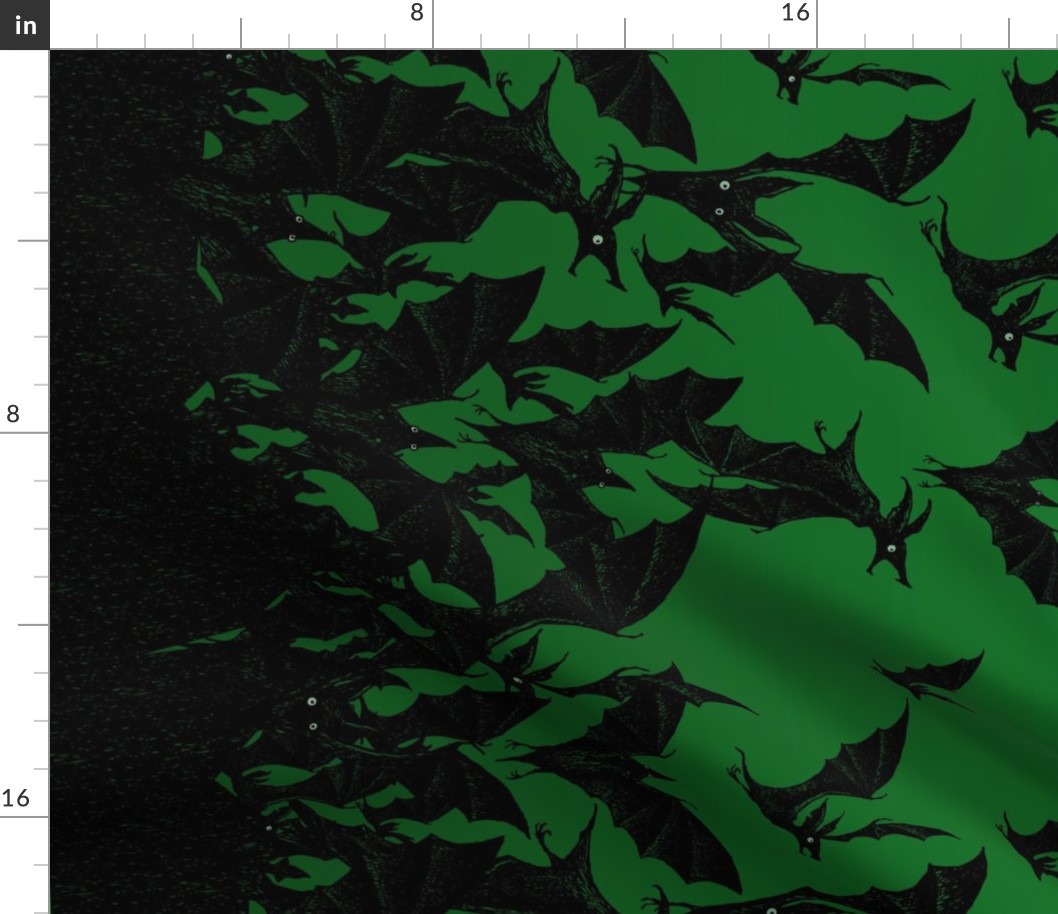Predators Of The Night: Exploring The World Of Night Hunters

Table of Contents
Masters of the Night: Sensory Adaptations of Nocturnal Predators
Nocturnal predators have evolved extraordinary sensory adaptations to thrive in low-light conditions. Their heightened senses allow them to navigate, hunt, and survive in the darkness.
Enhanced Senses
Many night hunters boast superior hearing, smell, and vision compared to their diurnal counterparts.
- Exceptional Hearing: Owls, for instance, possess asymmetrical ear openings, allowing for precise sound localization. This enables them to pinpoint the location of prey even in dense foliage. Their specialized feathers further dampen sound, ensuring silent flight during the hunt.
- Echolocation: Bats are renowned for their echolocation abilities. They emit high-frequency sounds and interpret the returning echoes to create a "sound map" of their surroundings, enabling them to navigate and locate insects in complete darkness. This sophisticated form of biosonar is a prime example of nocturnal vision adaptation.
- Infrared Sensing: Certain snakes, like pit vipers, possess heat-sensing pits between their eyes and nostrils. These pits detect infrared radiation emitted by warm-blooded prey, allowing them to strike with deadly accuracy, even in total darkness. This infrared sensing is a crucial element in their nocturnal hunting strategy.
Camouflage and Stealth
In addition to heightened senses, many nocturnal predators employ masterful camouflage and silent hunting techniques to ambush their prey effectively.
- Cryptic Coloration: Owls often have mottled plumage that blends seamlessly with tree bark and foliage, making them virtually invisible against the night sky. This night camouflage is essential for successful hunting.
- Spotted Coats: Leopards’ spotted coats provide excellent camouflage in dappled moonlight and shadows, enabling them to stalk their prey undetected. Their silent movements are crucial for this stealth hunting.
- Silent Movement: Big cats, like leopards and lions, are renowned for their silent stalking abilities. Their padded paws and flexible bodies minimize noise, allowing them to approach prey undetected. This silent predator approach is a key element of their hunting success.
Diverse Night Hunters: A Global Perspective
Nocturnal predators encompass a stunning array of species, representing diverse taxonomic groups and geographic locations.
Mammalian Predators
Nocturnal mammals represent a significant portion of the world's night hunters.
- Big Cats: Leopards, jaguars, and some lion populations are highly successful nocturnal predators, employing stealth and power to hunt a variety of prey. Their geographic distribution spans across continents, adapting to diverse habitats.
- Canids: Foxes, jackals, and other canids are also skilled night hunters, often utilizing their keen sense of smell to locate prey. Their hunting strategies are diverse depending on their environment.
- Mustelids: Weasels, ferrets, and other mustelids are small but fierce predators, often hunting rodents and other small mammals under the cover of darkness.
Avian Night Hunters
Owls are the quintessential avian night hunters, but other nocturnal birds exist.
- Owls: These raptors possess exceptional hearing and silent flight, making them highly effective predators. Their dietary preferences vary, with some specializing in rodents, while others target larger prey.
- Nightjars: These crepuscular and nocturnal birds are masters of camouflage, blending seamlessly into their surroundings. They feed primarily on insects, using their large mouths to catch them in flight.
Reptilian and Amphibian Night Hunters
Many reptiles and amphibians also embrace nocturnal lifestyles, relying on their unique adaptations for survival.
- Snakes: Numerous snake species are nocturnal, utilizing their excellent sense of smell and infrared sensing to hunt rodents, amphibians, and other creatures. Venomous snakes, like many vipers, often use their venom to subdue prey.
- Frogs and Toads: Several frog and toad species are nocturnal, using their sticky tongues to catch insects and other invertebrates. Their camouflage helps them blend into their environment.
The Importance of Nocturnal Predators in the Ecosystem
Nocturnal predators play a critical role in maintaining the health and balance of their ecosystems.
Population Control
Predators are keystone species, effectively regulating prey populations. Without predators, prey populations would explode, leading to overgrazing, depletion of resources, and potential ecosystem collapse. This population control is essential for biodiversity.
Biodiversity
Nocturnal predators contribute significantly to overall biodiversity by influencing the distribution and abundance of their prey. This impact ripples through the food chain, affecting plant life and other species. Their presence helps maintain a healthy and balanced ecosystem. The absence of these nocturnal predators would have serious consequences for the ecosystem’s health.
Understanding Our Night Hunters
This exploration of predators of the night reveals a fascinating world of diverse species and remarkable adaptations. From the silent stalking of big cats to the eerily precise hunting of owls, these creatures are masters of their nocturnal domains. They are essential components of healthy ecosystems, regulating populations and contributing to biodiversity. Continue your exploration of the amazing world of predators of the night – discover more about these fascinating creatures and their vital role in our ecosystems! Learn more through wildlife documentaries, responsible wildlife viewing, or further research into nocturnal wildlife.

Featured Posts
-
 F1 Piloto Argentino Desata Polemica Al Comparar Argentina Y Uruguay
May 12, 2025
F1 Piloto Argentino Desata Polemica Al Comparar Argentina Y Uruguay
May 12, 2025 -
 Adam Sandler And His Wife Their Netflix Movie Romance And Its Lasting Impact
May 12, 2025
Adam Sandler And His Wife Their Netflix Movie Romance And Its Lasting Impact
May 12, 2025 -
 Oscars 2025 Adam Sandlers Cameo Hilarious Outfit And Timothee Chalamet Hug Explained
May 12, 2025
Oscars 2025 Adam Sandlers Cameo Hilarious Outfit And Timothee Chalamet Hug Explained
May 12, 2025 -
 Benny Blanco And Selena Gomez The Truth Behind The Cheating Allegations
May 12, 2025
Benny Blanco And Selena Gomez The Truth Behind The Cheating Allegations
May 12, 2025 -
 John Wick Chapter 5 Release Date Cast And Plot Speculation
May 12, 2025
John Wick Chapter 5 Release Date Cast And Plot Speculation
May 12, 2025
Latest Posts
-
 The Shane Lowry Video Why American Fans Are Divided
May 12, 2025
The Shane Lowry Video Why American Fans Are Divided
May 12, 2025 -
 4 Year Old Makes Putt At Augusta Rory Mc Ilroys Daughter
May 12, 2025
4 Year Old Makes Putt At Augusta Rory Mc Ilroys Daughter
May 12, 2025 -
 Shane Lowrys Viral Moment The American Fan Reaction
May 12, 2025
Shane Lowrys Viral Moment The American Fan Reaction
May 12, 2025 -
 Watch Rory Mc Ilroys Daughters Putt At Augusta
May 12, 2025
Watch Rory Mc Ilroys Daughters Putt At Augusta
May 12, 2025 -
 Controversial Shane Lowry Video A Divide Among American Fans
May 12, 2025
Controversial Shane Lowry Video A Divide Among American Fans
May 12, 2025
